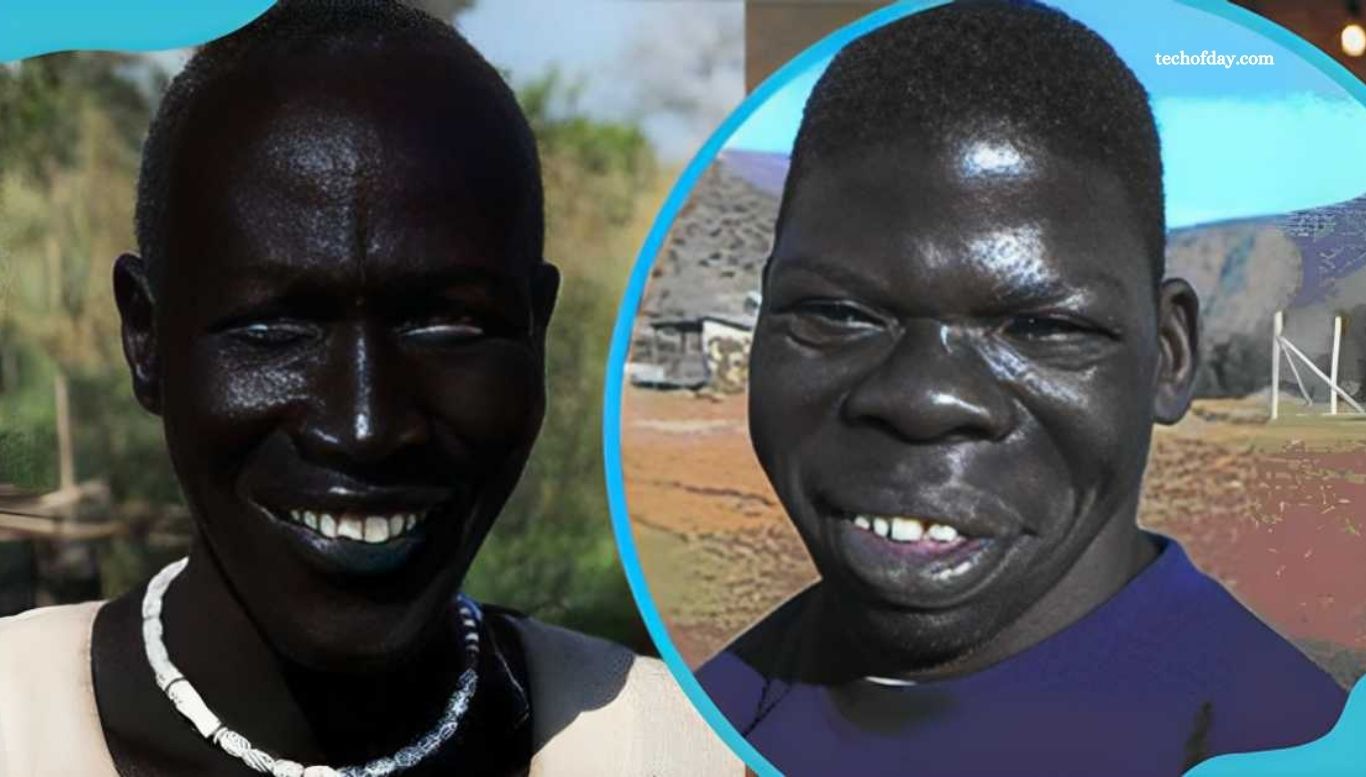The Darkest Skin Tone in the World: An In-Depth Study

“The Darkest Skin Tone in the World: An In-Depth Study” explores the fascinating and diverse world of human skin pigmentation. This study delves into the science behind the darkest skin tones, examining the role of melanin and genetic factors that contribute to this unique trait.
By highlighting individuals with the deepest skin tones and exploring cultural, social, and historical perspectives, this study aims to foster a deeper understanding of human diversity. The research also addresses misconceptions and celebrates the beauty of all skin tones, emphasizing the importance of embracing the richness of human variation in today’s global society.
Find Out the Blackest Person in The World: A Detailed Search
It may seem like an unusual question, but have you ever wondered who holds the title of the “blackest” person in the world? Is it even possible to determine this, given that there’s no universal scale or registry to measure such a trait?
While we can’t pinpoint a definitive answer, there are ways to explore this curiosity. Although no single individual can be named the “blackest” person, we can examine certain groups and models with the darkest skin tones. Through this approach, we can appreciate the diversity of human pigmentation and celebrate the unique beauty within it.
Read More: Simpcitu: A Comprehensive Guide to Its Concept and Implications
Ethnic Groups in Africa with the Darkest Skin Tones
Africa is home to various ethnic groups with rich, dark skin tones, particularly in regions near the equator with abundant sunlight. Among these groups, several stand out for their strikingly dark skin.
Dinka and Nuer (South Sudan)
The Dinka and Nuer, native to South Sudan, are among the darkest-skinned people globally. Living in one of the sunniest regions, their dark skin serves as a natural adaptation to intense sunlight. Their tall stature and distinctive physical traits contribute to their unique appearance.
Maasai (Kenya and Tanzania)
The Maasai people, known for their semi-nomadic lifestyle, inhabit sunny regions. Their skin tone is essential for survival in a harsh environment, helping them thrive in the rugged terrain.
Himba (Namibia)
The Himba people of Namibia are famous for their skincare rituals, which involve applying a mixture of butterfat and ochre to protect their skin from the desert sun. This practice gives their skin a reddish tint, and their minimal clothing and distinctive culture make them fascinating to outsiders.
Shilluk (South Sudan)
Neighbors to the Dinka and Nuer, the Shilluk people also possess deep skin tones as a crucial adaptation to the harsh sunlight near the Nile River. Their dark skin plays a vital role in their cultural practices and way of life.
Dark-Skinned Models Redefining Global Beauty
Traditionally, the fashion and beauty industries favored Eurocentric standards, promoting light-skinned, thin models with blue eyes. However, as beauty norms evolve, darker-skinned models are increasingly recognized and celebrated. Here are a few iconic figures redefining beauty.
Nyakim Gatwech (South Sudan)
Known as the “Queen of Dark,” Nyakim Gatwech is a South Sudanese model celebrated for her deep skin tone. She uses her platform to promote body positivity and self-acceptance, particularly for dark-skinned women.
Khoudia Diop (Senegal)
Khoudia Diop, the “Melanin Goddess” from Senegal, embraces her dark skin and challenges traditional beauty standards. She empowers others by using her complexion to foster positivity and self-love.
Alek Wek (South Sudan)
Alek Wek broke barriers in the 1990s as one of the first dark-skinned models to gain international recognition. Her success opened doors in both fashion and Hollywood, making her an iconic figure in the industry.
Anok Yai (Egyptian-Sudanese)
Anok Yai gained fame after a viral photo from a college event propelled her into the fashion spotlight. Her flawless dark skin and elegant features have made her a rising star, representing top brands in the fashion world.
Duckie Thot (South Sudanese-Australian)
Australian model Duckie Thot, of South Sudanese descent, gained recognition for her striking dark skin and doll-like features. Her appearance on “Australia’s Next Top Model” helped catapult her into the fashion industry.
Adut Akech (South Sudan)
Adut Akech, a South Sudanese-Australian model, quickly rose to fame and is often considered one of the darkest-skinned top models. Her unique beauty has earned her spots on magazine covers and runways for leading designers.
Flaviana Matata (Tanzania)
Tanzanian model and beauty queen Flaviana Matata gained prominence after winning Miss Universe Tanzania. Known for her dark skin and short hair, she has worked with top designers and advocates for education for young girls in Tanzania.
Frequently Asked Questions
What does “the blackest person in the world” mean?
The term refers to individuals with the darkest natural skin tones. It is a subjective concept, often influenced by geographical regions, cultural perceptions, and varying definitions of skin pigmentation.
Is there an official title for the blackest person in the world?
No, there is no official title or global registry for the “blackest person in the world.” Skin tone varies greatly among individuals, making it impossible to define a single person as the “blackest.”
Why are some people darker-skinned than others?
The skin’s melanin content plays a key role. People from regions near the equator typically have higher melanin levels due to prolonged exposure to intense sunlight, resulting in darker skin tones as a protective adaptation against UV radiation.
Can the “blackest person” be determined scientifically?
While skin tone can be scientifically measured based on melanin levels, it is difficult to rank individuals as the “blackest.” There is no universal scale to quantify or compare skin tones definitively.
What are some of the darkest-skinned groups in the world?
Various ethnic groups, particularly in Africa, are known for their dark skin tones. These include the Dinka and Nuer of South Sudan, the Maasai of Kenya and Tanzania, the Himba of Namibia, and the Shilluk of South Sudan.
Are there dark-skinned models who represent global beauty?
Yes, several dark-skinned models have made significant strides in the fashion industry, challenging traditional beauty standards. Some notable figures include Nyakim Gatwech, Khoudia Diop, Alek Wek, and Adut Akech, among others.
Why is it important to celebrate dark skin tones?
Celebrating dark skin tones helps break stereotypes, fosters inclusivity, and encourages self-acceptance. It promotes body positivity and empowers individuals to embrace their unique beauty, regardless of societal standards.
Can this research help in understanding skin diversity?
Yes, examining the darkest skin tones provides valuable insight into the biological, cultural, and environmental factors that influence human pigmentation. It helps highlight the beauty of human diversity and the role of genetics in shaping skin tones.
How does skin tone impact cultural practices?
In many cultures, dark skin tones are not only a biological trait but also hold cultural and social significance. In some communities, skin tone plays a role in traditions, customs, and identity, influencing everything from rituals to social status.
Is there a connection between skin tone and survival in harsh climates?
Yes, darker skin tones provide protection against the harmful effects of UV radiation, especially in regions with intense sunlight. This adaptation has been crucial for the survival of many ethnic groups in equatorial and desert areas.
Conclusion
The concept of identifying the “blackest person in the world” is both subjective and complex, as skin tone varies across individuals and is influenced by numerous factors such as genetics, geography, and cultural practices. While there is no definitive answer, we can celebrate the rich diversity of dark skin tones across the globe, particularly among ethnic groups like the Dinka, Nuer, Maasai, Himba, and Shilluk.
Additionally, models like Nyakim Gatwech, Khoudia Diop, and Alek Wek are redefining beauty standards and empowering individuals to embrace their natural skin tones. Ultimately, appreciating the depth and beauty of skin diversity fosters inclusivity and promotes self-acceptance worldwide.




